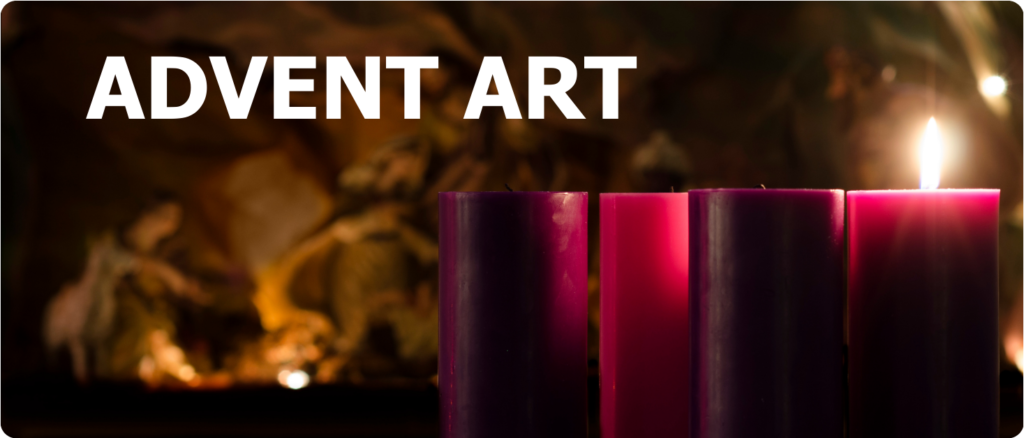



KING OF THE JEWS
"Now after Jesus was born in Bethlehem of Judea in the days of King Herod the king, behold wise men from the east came to Jerusalem, saying, 'Where is he who has been born king of the Jews? For we saw his star when it rose and have come to worship him.'" ~ Matthew 2.1-2
"And over his head they put the charge against him, which read, 'This is Jesus, King of the Jews.'" ~ Matthew 27.37
One of the greatest ironies of the life of Jesus is summed up in this verse. He was crucified under a sign reading: King of the Jews. This sign was clearly one of intended mockery. “We all know very well,” they were thinking, “that although this man Jesus claimed to be something of a king, he is clearly not.” In their minds, they were being cruelly ironic with the sign. “Of course this is no king! Look at him up on that cross! What kind of king ends his life in such disgrace?” But the greater irony at play is that they were actually right, Jesus was the King of the Jews. The man mocked as king, is in fact the king. And he’s not just king of the Jews but Lord over all. His kingship extends not just over the nation of Israel, but the universe. It extends over the soldiers who crucified him, the Pharisees who conspired against him, and the crowd who mocked him. And us – you and me.
But perhaps what is most poignant in this scene lies deeper. You see, it was precisely through his horrendous torture and death on the cross that this king was establishing his eternal kingdom. Isn’t that amazing? It was in his own death that Jesus was making the ultimately deathblow to Satan, sin and death. D. A. Carson writes: “Christians would speak, with profound irony, of Jesus reigning from the cross.” It is precisely through the weakness of the cross that God’s wisdom and power is most ultimately displayed. There is one final layer of irony in this scene. Matthew 27:41-42 writes: “So also the chief priests, with the scribes and elders, mocked him, saying, “He saved others; he cannot save himself. He is the King of Israel; let him come down now from the cross, and we will believe in him.” But again, in their mockery they spoke better than they knew, because Jesus, in refusing to save himself, was saving others. If he had saved himself, he couldn’t have saved others, and it was precisely by not saving himself that he saved us. Carson concludes: “It was not the nails that held Jesus to that wretched cross; it was his unqualified resolution, out of love for his Father, to do his Father’s will – and, within that framework, it was his love for sinners like me. He really could not save himself.” Praise God for the sacrifice of the King! (Advent article t.ly/LY8m_)
Prayer
Jesus, we yield the throne of our hearts to You. Oh, great King, we seek Your protection, Your provision, Your justice which flows forth from Your righteous rule. Help us to trust in Your rule of our lives. Help us not to attempt to usurp the throne from You. We kneel before You and pledge our allegiance to You our King. Amen.




The Visit of the Wise Men of the East (1894) by Heinrich Johann Michael Ferdinand Hofmann
(print from engraving; The Hofmann Gallery of Original New Testament Illustrations, Thames collection)
This is a print from a collection of illustrations of famed German artist Heinrich Hofmann from the late 19th century. Hofmann’s Visit of the Wise Men is not the typical nativity scene of a manger and a newborn Christ as told in Luke 2, but rather this portrayal is taken from Matthew 2 where the Magi visited a house and gazed about a “child” rather than a “baby.” Jesus is likely a year old and the family is no longer seeking shelter in the shadows of a cave/stable, but rather has taken up residence in a proper home.
The Christ child evokes a strength and regal authority emphasized by his outstretched hand. Light emanates from the Child enveloping Himself and His mother and illuminating the room. The star that has led the Magi to Jesus brings its own light, but it is overpowered by the Light of the World. The expressions of the wise men are ones of wonder and awe as one kneels in worship before the King they have sought and traveled so far to find.
Mary has a calmness and a serenity that exudes a peace that comes from the Prince of Peace in her arms. She is dressed in a flowing tunic and headdress that exudes grace and beauty. Joseph, stands in the background, hands clasped, observing carefully all that is unfolding before him.

Adoration of the Child (1619-1620) by Gerrit Van Honthorst
(oil on canvas; Uffizi Gallery, Florence, Italy)

The Visit of the Wise Men of the East (1894) by Heinrich Johann Michael Ferdinand Hofmann
(print from engraving; The Hofmann Gallery of Original New Testament Illustrations, Thames collection)

This is a print from a collection of illustrations of famed German artist Heinrich Hofmann from the late 19th century.
Hofmann’s Visit of the Wise Men is not the typical nativity scene of a manger and a newborn Christ as told in Luke 2, but rather this portrayal is taken from Matthew 2 where the Magi visited a house and gazed about a “child” rather than a “baby.” Jesus is likely a year old and the family is no longer seeking shelter in the shadows of a cave/stable, but rather has taken up residence in a proper home.
The Christ child evokes a strength and regal authority emphasized by his outstretched hand. Light emanates from the Child enveloping Himself and His mother and illuminating the room. The star that has led the Magi to Jesus brings its own light, but it is overpowered by the Light of the World.
The expressions of the wise men are ones of wonder and awe as one kneels in worship before the King they have sought and traveled so far to find.
Mary has a calmness and a serenity that exudes a peace that comes from the Prince of Peace in her arms. She is dressed in a flowing tunic and headdress that exudes grace and beauty.
Joseph, stands in the background, hands clasped, observing carefully all that is unfolding before him.

Playlist Daily Highlight
Take the time to listen . . . really listen to the words of this song. Reflect on them. Let God’s spirit speak to you in this moment.





